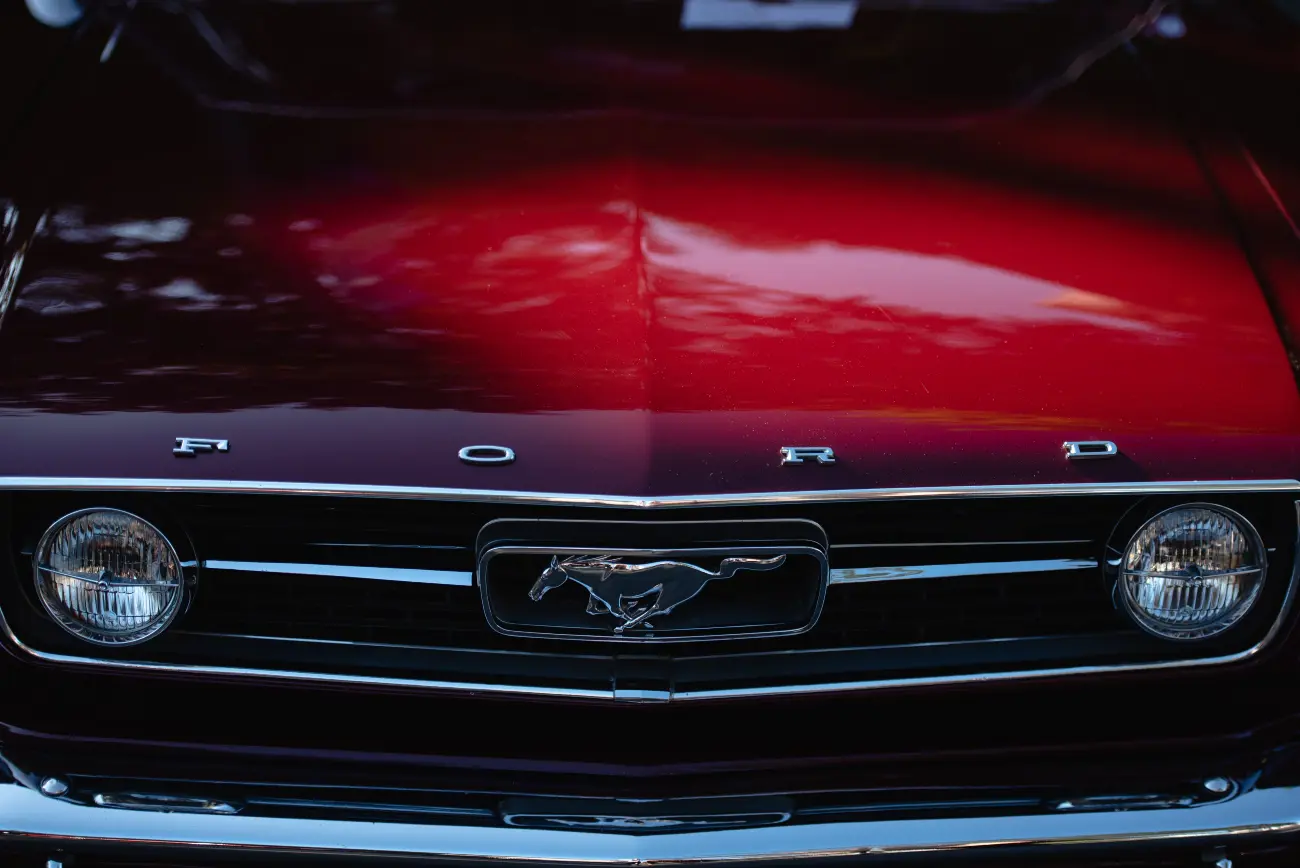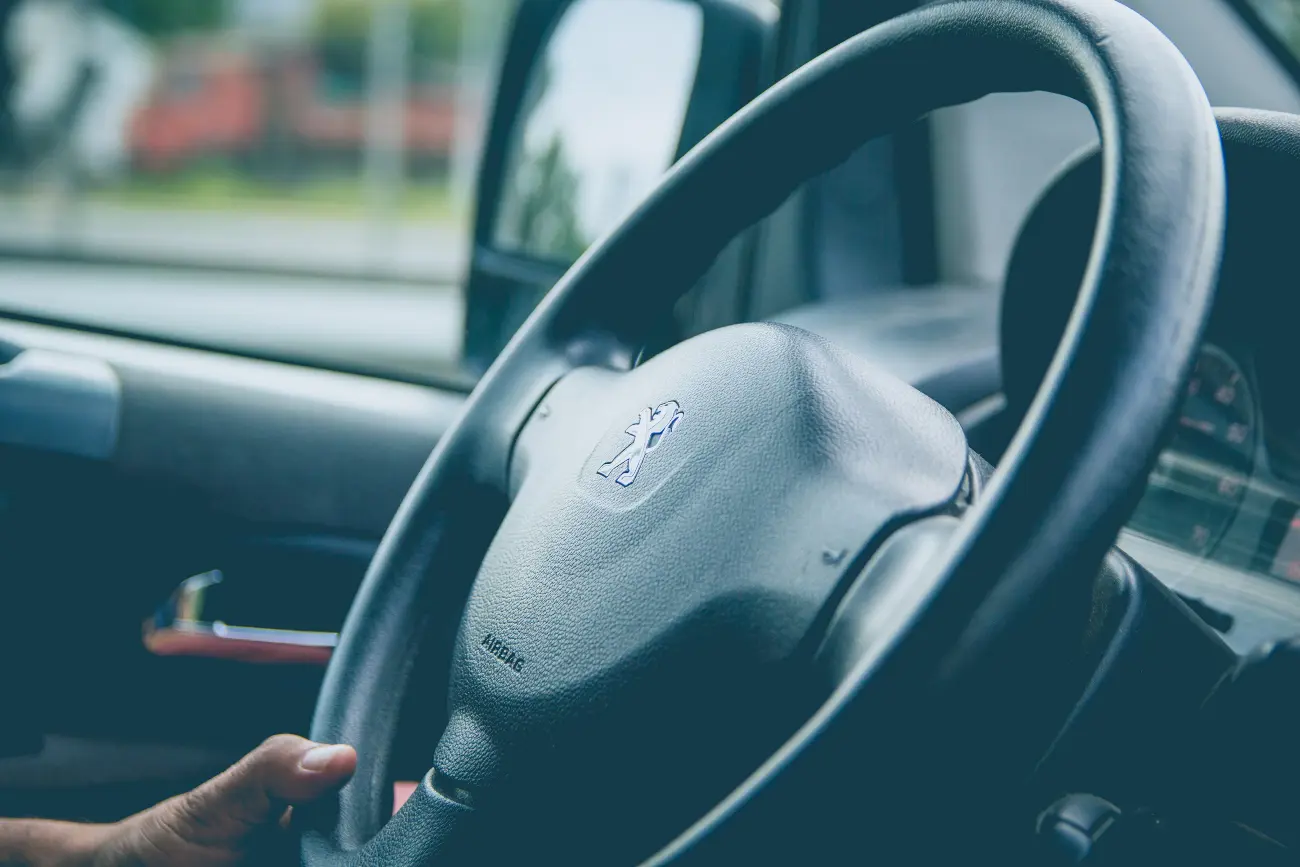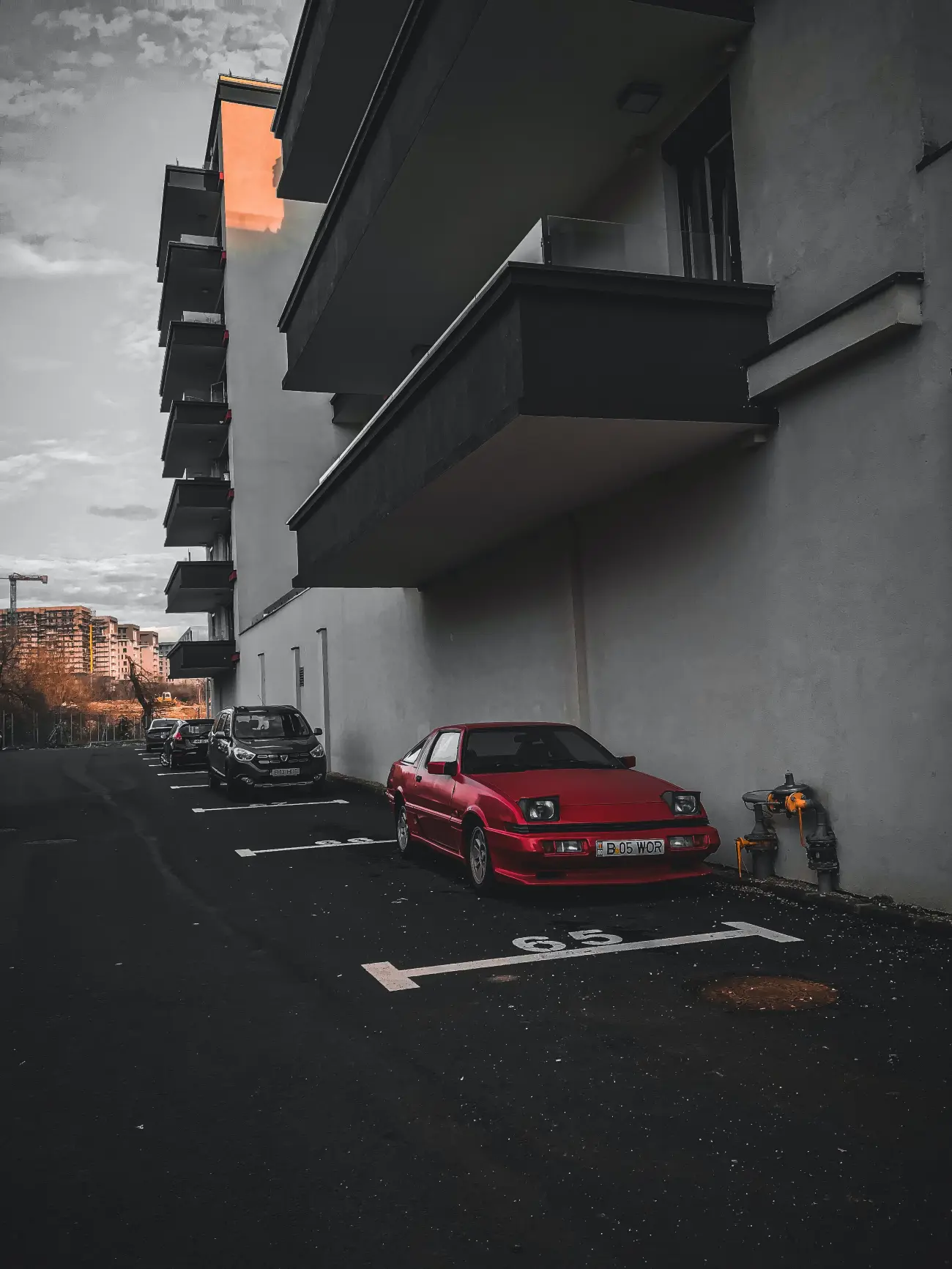15 fantastic forgotten classic cars
25 August 2022
When asked to reel off some iconic classic cars, many of us will reach for the same names – the MG, the Spitfire, the DS, the E-Type. Then there are those vehicles that perhaps weren’t revered during their lifetimes, but whose very familiarity and evocation of a certain era make them much-loved classics today.
The Austin Metro and Ford Cortina are two examples of this latter group.

But what about those cars that have unjustly slipped into obscurity?
There are a lot of these unfairly forgotten classics, and we’ve chosen 15 for you here. Any of these would make a wonderful classic car ownership prospect.
Many of them would also make great first classics for younger fans – and, here at Lancaster, we’ll be proud to kit you out with the relevant classic car insurance for young drivers.
1. Fiat Strada
The advertising campaign for the Strada, Fiat’s engagingly boxy Golf rival, claimed that the car was ‘hand-built by robots’. And that quirkiness, that desire to do things differently, embodies the Strada from bonnet to rear bumper.
There was, as was obligatory at the time, a sporty version.
Indeed, for a few months in 1983, the Strada Abarth enjoyed a short heyday as Britain’s favourite hot hatch, between the retirement of the Mk1 VW Golf GTI and the bedding-in of its Mk2 successor.
This was a sporty hatch that dared to do things differently – no turbocharging, no fuel injection, just a hulking two-litre twin cam engine equipped with a Weber carburettor controlling the fuel and air intake. A car for those who liked their hot hatches a little more visceral, this may well be the Strada variant that appeals most to younger drivers.
If so, we salute you for your originality, and we strongly recommend pairing your purchase with some specialist classic car insurance for young drivers.
The regular Strada, meanwhile, was something of an also-ran among so many other highly competent 1980s small family hatches – the Golf, Astra and Escort chief among them. Now, though, it deserves to be remembered fondly as an injection of quirky Fiat styling into what was, at the time, a rather solid and sensible sector.
2. Lotus Excel
Many Lotuses of the past (the Elan, Elite and Esprit, to name just three examples) have attained high status – and rightly so. The 1960s Elan beautifully showed off the company’s philosophy of fun through light weight and simple engineering. Indeed, it was one of the most eye-catching and grin-inducing sports cars of its time.
The Elite and Esprit, for their part, added some truly futuristic, wedge-shaped looks, making them two of the most worshipped cars of the late 1970s and early ‘80s.
Arriving a little later, the Excel hasn’t yet ascended to the same hallowed podium as its predecessors. And, indeed, you can find yourself a used Excel for significantly less than an Esprit in similar condition.
You can put some of that down to the latter car’s famous submarine appearance in Bond, but still…
Another difference – and, depending what you want your Lotus for, this will be a boon or a drawback – is that the Excel can seat four in reasonable comfort, while the Esprit was always a strict two-seater. Perhaps, as a result, it was that little bit sexier in ‘look at me, I’m a genuine British supercar’ terms.
Where the Esprit looks otherworldly, the Excel looks merely very good. But as a car that can fulfil a great many functions – look sharp, provide B-road thrills, and take the whole family off for a weekend away – the Lotus Excel has relatively few rivals at its price point.
3. Peugeot 309 GTI

The relative oblivion into which the Peugeot 309 GTI has slipped is still something of a mystery to us. After all, its mechanically very similar sibling, the 205 GTI, is rightly remembered as one of the best hot hatches ever made. What gives?
Well, you could argue that the 309 doesn’t quite have the nippy looks of its smaller stablemate, and that sticking a saloon-style boot onto the end of the vehicle loses some of the 205’s inimitable charm.
Yes, perhaps the 309 GTI looks faintly frumpy by comparison. But if we had a few grand to spare and wanted a cooking and characterful French car from the 1980s, we’d look very hard at the sportiest 309.
Fun, good-looking and affordable, the 205 GTI was a huge hit with younger drivers – and we see no reason why the 309 shouldn’t tick all the same boxes. Make sure you protect it with some classic car insurance for young drivers – and hit those back roads.
4. Citroen GS
This is definitely a car that seems frozen in time. The GS was one of the most admired cars of its time, and was a deserved winner of the European Car of the Year award for 1971 (more on that award, and some of our favourite winners, in this blog post). Now, though, it’s very rare and somewhat forgotten – unlike other bold, envelope-pushing Citroens of the time, some as the SM and CX.
The car was dreamed into being by legendary French designer Robert Opron, who was turning out one brilliant vehicle after another for Citroen at the time. Yes, the Ami 8, SM and CX were all fruits of Opron’s fertile mind, as was the DS facelift of 1967.
Opron would go on to style the Renault Fuego and the Alfa SZ – a divisive-looking car but still one of our favourite Alfas of all time.
The GS had a wonderfully aerodynamic body shape and its combination of fully independent hydro pneumatic brakes and self-levelling suspension made for one of the safest and most comfortable rides of its era.
Most of all, though, we just love how bold, chic and unmistakably French it looks. Bravo, Citroen.
5. Isuzu Piazza
When most car nuts are asked to reel off the iconic creations of the great Italian designer Giorgetto Giugiaro, a few obvious names always come up. The Lotus Esprit. The Maserati Ghibli. The Mk1 Golf. The Alfa Giulia Sprint GT.
Some hallowed names in automotive history, basically. But how many will list the Isuzu Piazza among Giugiaro’s achievements?
Probably not that many, as the car was a modest seller for one of the 1980s’ less well-known marques. But, to our eyes, the svelte, low-slung Piazza deserves wider recognition than it currently receives.
We can see hints of the VW Scirocco in there. Actually, we’d go further and say that the Scirocco’s successor, the fondly-remembered Corrado, has a hefty chunk of Piazza in its looks – even though it came on the market some seven years later.
Niche vehicle it may be, but there is a worldwide Piazza owners’ club, where you can tap into a vast network of Piazza-related expertise. That’s something that younger, more inexperienced owners in particular may want to do.
Your next step will be to protect your Piazza with some classic car insurance for young drivers.
6. Nissan Prairie
The Renault Espace of 1984 onwards is often cited as the first multi-purpose vehicle (MPV), or people carrier. However, while it was undoubtedly a game-changer, the Espace wasn’t first to the MPV table. That honour goes to the Nissan Prairie, which rumbled onto forecourts back in 1982.
By various criteria, Nissan did something pretty innovative with the Prairie. For one thing, the car could be specified with either front-wheel or four-wheel drive.
Elsewhere, there were sliding doors at the rear, plus a folding rear seat, allowing drivers to prioritise passenger or boot space as required. That may seem standard stuff today, but it was pretty revolutionary at the dawn of the ‘80s.
The Prairie deserves high praise for introducing quite a few features that we now expect as standard from practical family cars.
Practical and sturdy-looking in a boxy, early ‘80s way, it should be better remembered than it is.
7. Audi 100 (C3 generation)
We raved about the aerodynamic performance of the Citroen GS a little further up. Well, the 1980s Audi 100 took that ball and ran with it, managing a drag coefficient of just 0.30.
Yes, the 100 immediately became the most aerodynamic vehicle in the world when it hit showrooms in 1982. This astonishing slipperiness was down, in part, to the windows.
This was the first production car where the glasshouse was absolutely flush with the door panels, avoiding any kinks for wind to get caught in.
The C3 was also the first generation of the 100 to get an estate, rather than a hatchback derivative. Yes, the long and distinguished roll call of handsome Audi estates (or ‘Avants’) begins here.
Given all this, it’s odd to realise that the ‘80s 100 is now less remembered, and certainly rarer on our roads, than contemporary
German rivals such as the all-conquering E30 BMW 3 Series.
8. Mazda MX-6
We have to admit that we had almost forgotten about this one. Mazda’s MX-5, RX-7 and RX-8 are all firmly bolted into classic car history… but what of the 1990s MX-6?
The car that arrived on our shores in 1991 was actually the second generation of the MX-6… but British and European buyers hadn’t been treated to the first iteration.
Front-engined and front-wheel-drive, it was mechanically very similar to the Ford Probe, this being the era of Ford / Mazda platform sharing.
What buyers got, then, was a medium-sized and rather handsome coupe with decent, if not earth-shattering performance. That, and the reliability that we’d come to expect from Japanese marques by now.
Despite these virtues, the MX-6 was overshadowed by cars such as the Toyota Celica and even its own Probe relative.
It survives in vanishingly small numbers today.
If you can find one, however, it would make a good first classic for a younger enthusiast: reliable, very unique, and fast enough without reaching the kinds of speeds that will drive up the costs of classic car insurance for young drivers.
9. Lancia Thema 8.32
We’ve always had a special fondness for ‘sleeper’ or ‘Q’ cars – vehicles whose extraordinary performance is hidden under ordinary clothes. The Audi S4 famously ticks this box in style – a fearsomely potent car masquerading (or rather, doubling) as a practical estate.
Lancia did something similar with the Thema 8.32. This, after all, looks like a fairly sober, if rather attractive Italian saloon. Under the bonnet, though, is a V8 engine from Ferrari – a match for a contemporary BMW M5 or any other speed-barge you care to mention.
And how did they cram a Ferrari V8 inside the bonnet of a sensible-looking large family car?
A few tricks were required, including the creation of a removable inner panel within the right-hand wheel arch, giving access to the power steering pump and alternator. The 8.32 is also lavishly appointed inside, with leather and walnut everywhere you turn.
Lancia started to decline, sadly, not long after this car came out. However, if you want to get a sense of its stylish heyday, the interior of a Thema 8.32 paints an eloquent picture.
10. Saab 9000 Turbo
Hang on, you’re thinking. Saab 900 Turbo – forgotten classic?
Classic, yes. Forgotten – hardly.
But wait – did you spot the extra zero there?
Yes, the 900 Turbo is a rightly revered classic. But the 9000, the 900’s bigger and more exclusive sibling, also got a Turbo variant.
And while this may not have earned itself quite such a halo status as the years have slipped by, the turbocharged 9000 is still quite the executive express.
The big, quick Saab was a supremely comfortable luxury express car. It was also, in the finest Saab tradition, supremely well built.
The 9000 was designed to withstand all that a Swedish winter could throw at it and, as a result, these cars are relatively resistant to the evils of corrosion. Given this, rustproofing could well be one item you can tick off your restoration to-do list.
We’d still urge you to get hold of some classic car insurance for young drivers, though.
11. Fiat 130
The well-heeled buyer of the early 1970s had quite a lot of choice when it came to handsome, comfortable luxury barges. These were the days just before everything went German in the luxury market, and there were some truly distinctive, desirable luxury cars being produced right across Europe.
The Volvo 164, the Jaguar XJ, the Audi 100; the Citroen CX, the Triumph 2000: yes, there were smart-looking, well-appointed executive cars wherever you cared to look.
Among this company, the Fiat 130 stands out as one of the very best, so its total obscurity now is surprising.
The 130 did a lot of things right: six cylinders, designed by Pininfarina, and produced in both saloon and coupé forms. The saloon was good-looking; the coupé, frankly, stunning.
The interior was stylish and comfortable, and the car’s engineering – including four-wheel independent suspension, with torsion bars in the front and coil springs at the rear – was bang up to the minute.
Why didn’t this excellent car become a world-beater?
We can’t really say, other than concluding that the rush towards German engineering had probably already begun.
As a result, the car is extremely rare as a used buy. Snap up any you find!
12. Honda Accord Type R
Think of the phrase ‘Type R’ and, as likely as not, it will be one of the various generations of Honda Civic that will spring to mind. We definitely shouldn’t forget, however, the next Honda up the pecking order, which also had an excellent Type R of its own.
Yes, if you needed hot-hatch thrills but also had a large family to haul around, Honda had an option for you in the shape of the Accord Type R.
The difference was that, where the Civic has had a Type R variant for the past five generations, the Accord only got a ‘hot’ option for one generation – the sixth, of 1998 to 2002.
And it was… well, a bit of a ‘Q’ car. Its subtle styling (unless you opted for the huge rear spoiler) didn’t give away its impressive performance and hugely entertaining handling. The 2.2-litre VTEC engine, though, was a very rev-happy unit, producing 209 bhp at 7200 revs per minute.
The Torsen limited-slip differential, meanwhile, gave the car superb torsional rigidity and legendarily good handling around corners. (What’s a limited-slip differential, we hear you ask? We explain more here.)
13. Volvo 740 Turbo
As we reflected in this article, turbocharging was all the rage in the late 1970s and early ‘80s. So much so that even Volvo, better known for safety than for performance, got in on the act. The Swedish firm first put a turbo engine in their long-serving 240 range in 1980.
Three years later, it was the turn of the more upmarket 740.
You might not remember the 740 that well as it played second fiddle, in the posh Volvo stakes, to the flagship 760. However, the latter’s more affordable sibling was a fine car that enjoyed some desirable ‘80s creature comforts such as power-adjusted driver’s seat, heated seats and more. And, being a Volvo, it was safe as houses.
Is a 740 the perfect fit for a younger driver? Being big, boxy and – even in turbocharged form – rather safe-looking, we’re not quite sure if it is. But if a large, safe, slab-sided sports saloon is the car of your dreams, we’ll be thrilled to provide you with the requisite classic car insurance for young drivers.
14. Mitsubishi Starion

Toyota Supra, Porsche 924, Mazda RX-7… Nissan 300ZX, Lotus Esprit… the 1980s were a very good time for wedge-shaped, futuristic-looking coupés with pop-up headlights. The Mitsubishi Starion has been somewhat forgotten, but deserves its place in this company.
Bearing echoes of both the Porsche (rear half) and the Toyota (front end), plus a bit of Fiat X1/9 thrown in for good measure, the Starion also had a squat, boxy, purposeful look that was all its own.
Also, rather uniquely, it was produced in two widths. The narrow-body car was made to comply with Japanese regulations, in which larger vehicles were susceptible for higher taxes. The rest of the world got the wider bodystyle – but only until 1985, when the latter was phased out and all Starions went narrow.
The sleek Mitsubishi also had the distinction of being Jackie Chan’s wheels in the film Cannonball Run II. We’ve got a fun feature about all the wonderful classic cars that featured in both Cannonball Run films – you can read it here.
15. Sunbeam Rapier Fastback
The late 1960s and early ‘70s were a great time for dashing but affordable coupés – the Datsun 240Z, Opel Manta and Mk1 Ford Capri being outstanding examples. The British firm Sunbeam, by now under Chrysler management, wanted in on the act – and duly delivered with the svelte and striking Rapier Fastback.
Bearing echoes of the much more exclusive Jensen Interceptor, the Rapier was a good-looking thing and could have turned Sunbeam’s fortunes around. Sadly, the slow-selling Rapier went through just 46,000 examples before being discontinued in 1976.
Find classic car insurance for young drivers at Lancaster
So, do you see yourself in a cheeky Peugeot 309 GTI or a big, comfortable Saab 9000 Turbo?
Do you long to explore those B-roads in a Lotus Excel?
Whatever classic you hanker for, we can insure it for you here at Lancaster.
We are able to provide various levels of classic car insurance for young drivers and more experienced owners alike.
Why not get a classic car insurance quote today?
